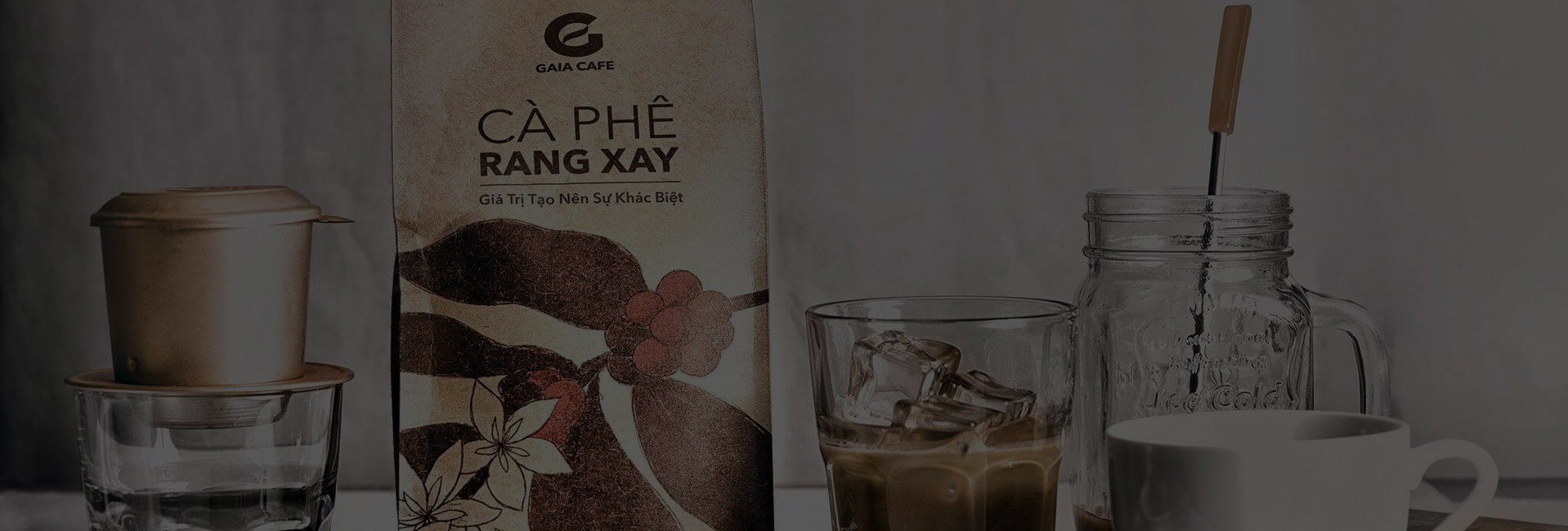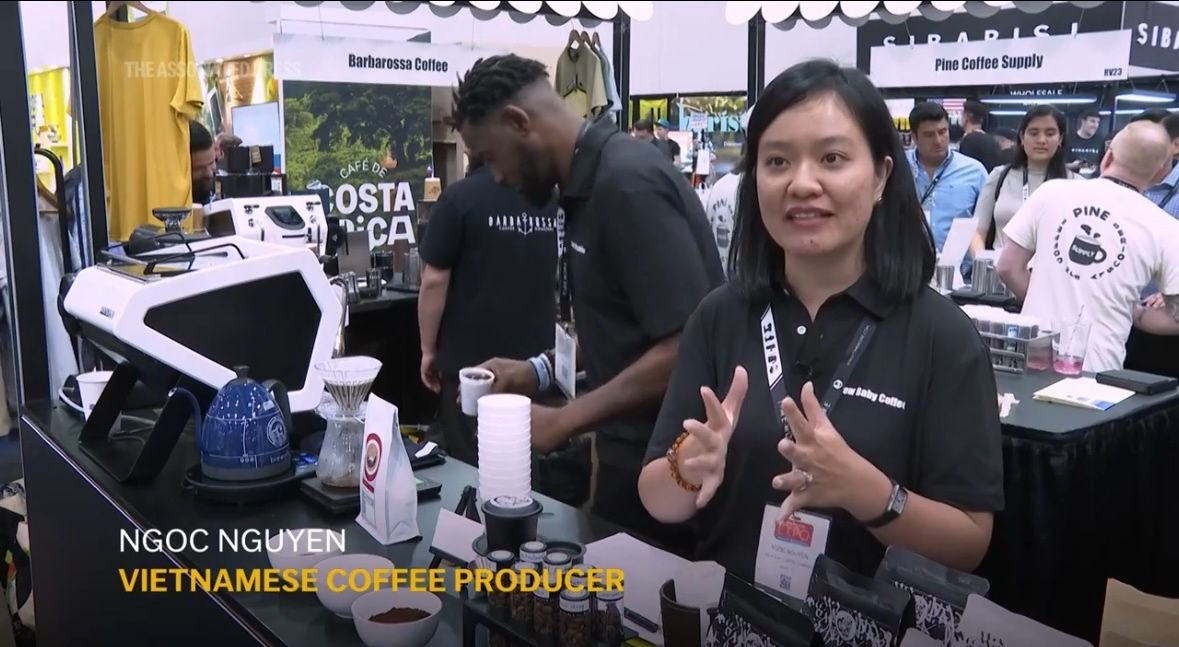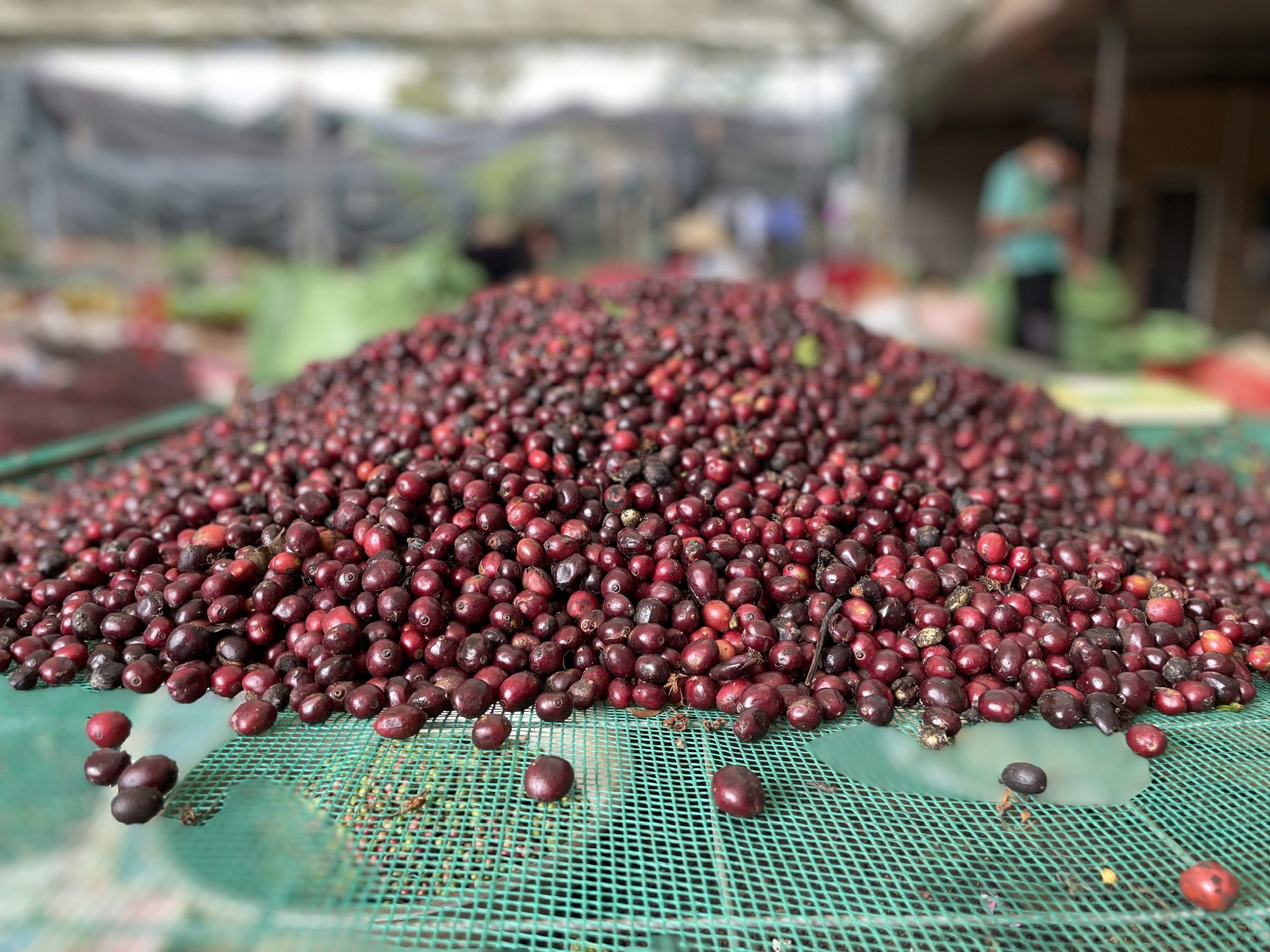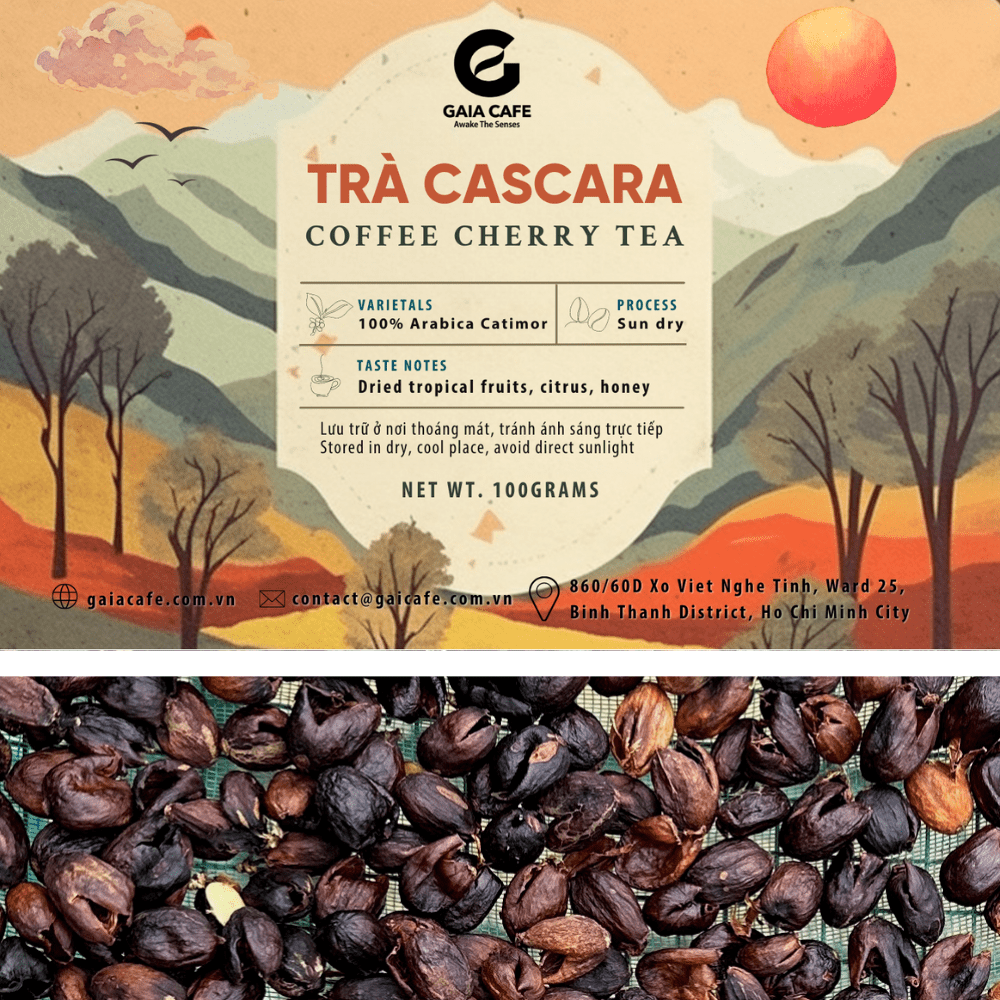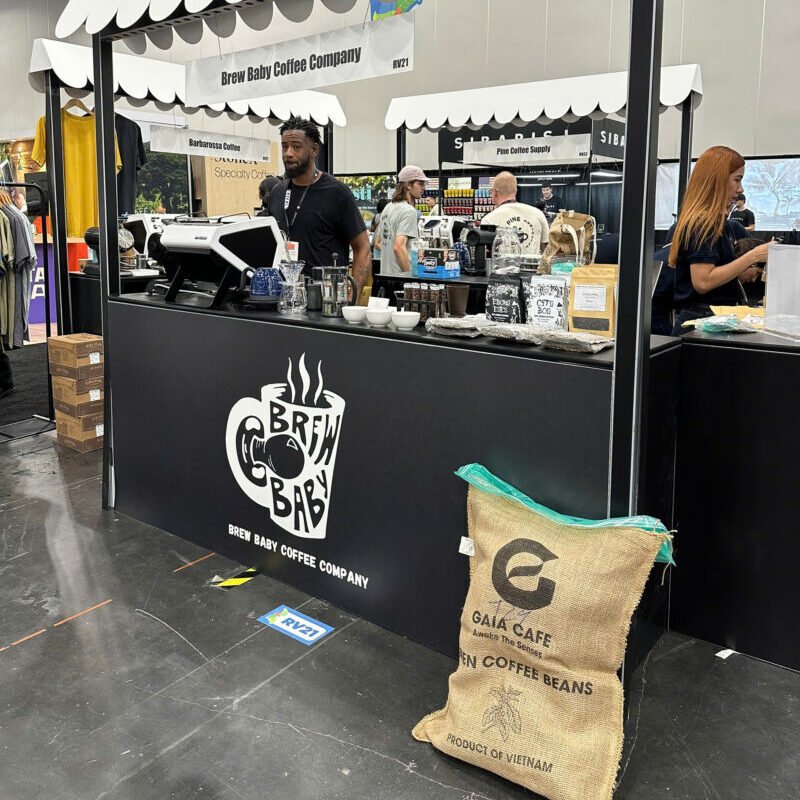
Vietnamese Coffee at Specialty Expo 2025
Reclaiming the Narrative: Vietnam’s Place in the Specialty Coffee World
A reflection on visibility, voice, and value for Vietnam’s coffee producers in the global specialty scene.
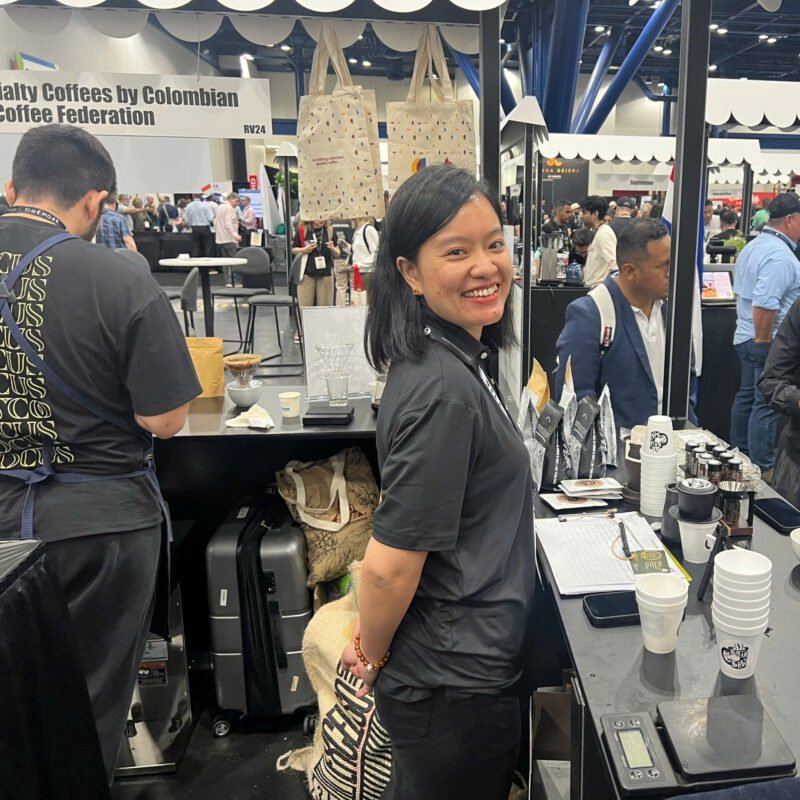


Stepping into Specialty Coffee Expo in Houston this year, I carried more than just samples of Vietnamese green and roasted coffee beans. On my back were also the stories of Vietnamese farmers, the weight of a country whose coffee identity is still largely misunderstood, and the hope that Vietnam’s voice in the specialty coffee conversation could grow louder. Representing Gaia Café Vietnam, I was fortunate to participate under the flag of a long-time US customer, Brew Baby Coffee Company. We have built a trusted direct-trade partnership over the years (riding the fourth wave of coffee and surviving a pandemic together), and this Expo was a chance for us both to strengthen the relationship while exploring new horizons. But as a coffee producer from Vietnam, I also saw a bigger picture – and the quiet absence of it.
The danger of a single story
Despite Vietnam being the second largest producer of coffee in the world, specialty conversations often skip over us. Standing amongst the giants in specialty coffee – Ethiopian heirlooms, Kenya micro-lots and Panama Geisha – Vietnamese coffee is rarely featured on equal footing. And when it is, it’s too often through a singular lens: Robusta. There were exactly three booths there that had Vietnamese coffee beans, and two of them only listed Vietnam amongst other Asian coffee producing countries. We, located in Roaster Village, were the only booth that featured 100% single-origin Vietnamese beans with both Robusta and Arabica varieties.
I borrowed the phrase “the danger of a single story” from Chimamanda Ngozi Adichie’s famous TED talk to illustrate this monolithic narrative that Vietnamese coffee is cheap, bulk, commodity, and low-quality. This one-dimensional portrayal boxes us into one category and keeps us there, taking away our chances to be acknowledged for the innovation us producers are pursuing everyday. It reinforces outdated hierarchies and overlooks the quiet revolutions happening on farms across Đắk Lắk, Lâm Đồng, and beyond.
To be fair, for a very long time we did not do any justice to our coffee beans. We in fact did play a role in painting this reductive image of low grade coffee producer and projected that to the world. The reasons for that I have already mentioned in my other blog posts so I would save you some times by not repeating it here. So there I was, jetlagged and full of coffee, walked into George R. Brown Convention Center to reclaim this narrative.
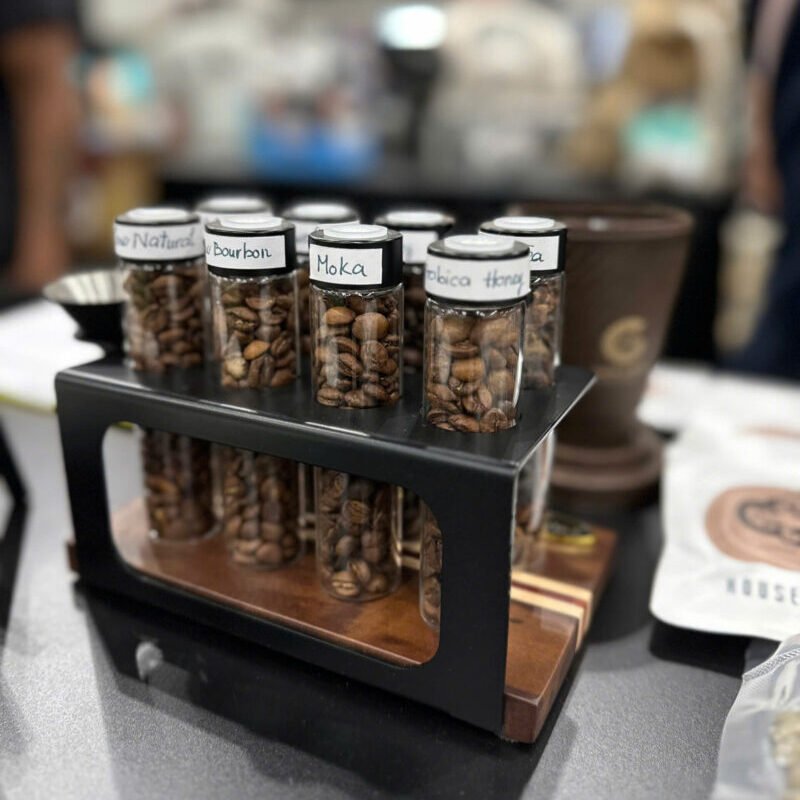

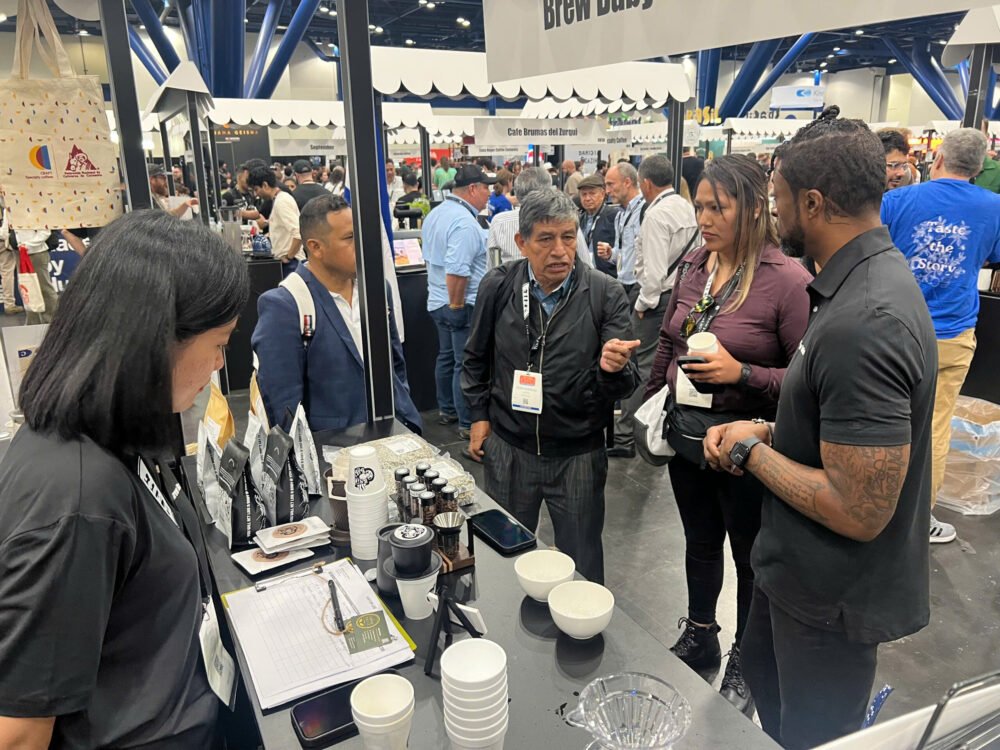
A new narrative: Transparent, Human, Direct
Throughout the three-day exhibition, I got to meet roasters, traders, educators, entrepreneurs, and coffee lovers who had never heard of nor tasted single-origin Vietnamese specialty coffee before. Upon tasting the roasted samples I brought with me, they were genuinely surprised and delighted at the flavors. We shared some fun processing experiments from this year’s crop: co-fermentation with pandan leaves and triple fermentation — sparking curiosity among small roasteries and home brewers. People did not think a Robusta could have such intense floral notes (it was a Robusta Natural medium roast); and they could not have enough of the Fine Robusta (Anaerobic Natural, light-medium roast). Even the lady Board Director of SCA came over and inquired about our Fine Robusta.
What I experienced first hand at the Expo reaffirmed that the world is thirsty for transparency and connection. Buyers are seeking relationships, not just beans. (Well, there were still a few who stopped by asking for the cheap cheap stuff…) Buyers want to know the who, the where, not just the what. And this is where Vietnamese producers can shine. Vietnamese farmers and new-generation coffee producers have invested in post-harvest innovation, soil health, sustainable practices, and traceability. Our people are entrepreneurs, stewards of the land, and experts in their craft. We don’t want to compete on price—we want to compete on quality consistency, flavor uniqueness, and integrity.
And we don’t want to be spoken about; we want to be part of the conversation.
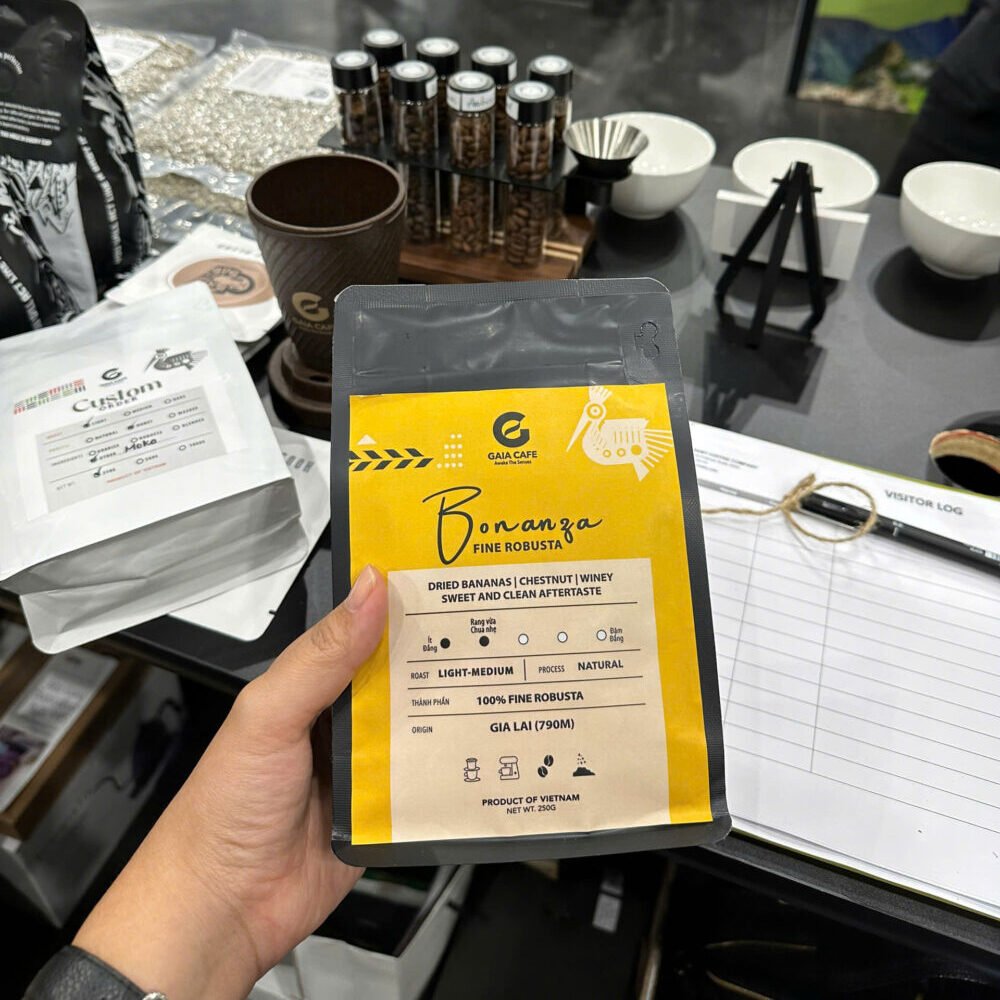
Given today’s volatile economic climate, having a direct farm-to-cup trade relationship with the coffee producers in the Bean Belt is ever more crucial. Direct trade fosters closer, long-term relationships between producers and roasters, which helps create transparency and stability during uncertain times. For roasters and cafés, offering farm-direct coffee supports storytelling and origin traceability—appealing to conscious consumers who care about sustainability, fairness, and impact. In volatile markets, brands built on transparency and ethics often retain stronger loyalty.
These relationships can provide better price security and commitment, especially when both commodity markets and geopolitical situations are fluctuating. More importantly, when there are no middlemen to claim a piece of this shrinking pie, as a producer I could help shoulder some of the tariffs burden and together with you weather this storm.
I told this to the AP News reporter when he came over to interview me at the booth, but that segment never made it on screen. You can watch the interview below and see for yourself.


